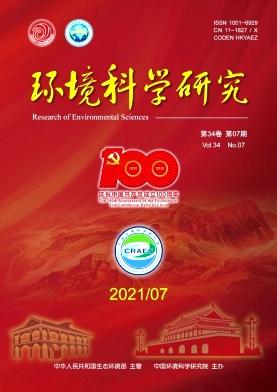Nan Jiang, Sai Li, S. Cao, Jianing Wei, Bei-bei Wang, N. Qin, X. Duan
{"title":"新冠肺炎疫情期间中国人口交通活动模式研究","authors":"Nan Jiang, Sai Li, S. Cao, Jianing Wei, Bei-bei Wang, N. Qin, X. Duan","doi":"10.13198/J.ISSN.1001-6929.2020.06.16","DOIUrl":null,"url":null,"abstract":"In order to understand the travel frequency and transportation modes of the Chinese population during the COVID-19 epidemic, the travel information of 8330 residents in 31 provinces from February 25th to March 14th, 2020 was collected, and the factors influencing the travel frequency and transportation mode were analyzed According to the severity of the epidemic, 31 provinces were classified, and the difference in residents' transportation modes under different grades were analyzed and compared with those in non-epidemic periods The results show that: (1) During the COVID-19 epidemic, 75 1% of people had travel activities, among which 5 5% took several trips per day and 17 6% took fewer than one trip per week Public transportation and taxi with higher risk of infection were chosen by 6 3% and 4 0% of the population, respectively (2) The travel frequency and transportation modes of Chinese residents during the COVID-19 outbreak may be affected by demographic variables, such as gender, age, urban and rural areas, regions, local or nearby suspected/confirmed cases, and the severity of the epidemic in the provinces The travel frequency and transportation modes of people in some provinces such as Tibet Autonomous Region and Qinghai Province were less affected by the epidemic, while the travel frequency and transportation modes of residents in Hubei Province changed the most compared with the non-epidemic period (3) During the COVID-19 epidemic, the proportion of Chinese residents who chose to walk and travel by car (taxi and private car) was much higher than during the non-epidemic period, while the proportion of people who chose public transportation and bicycles or electric bicycle was lower than during the non-epidemic period This study found that the travel frequency and transportation modes of the Chinese population changed dramatically due to the COVID-19 epidemic © 2020, Editorial Board, Research of Environmental Sciences All right reserved","PeriodicalId":21108,"journal":{"name":"环境科学研究","volume":"33 1","pages":"1675-1682"},"PeriodicalIF":0.0000,"publicationDate":"2020-07-01","publicationTypes":"Journal Article","fieldsOfStudy":null,"isOpenAccess":false,"openAccessPdf":"","citationCount":"16","resultStr":"{\"title\":\"Transportation Activity Patterns of Chinese Population during the COVID-19 Epidemic\",\"authors\":\"Nan Jiang, Sai Li, S. Cao, Jianing Wei, Bei-bei Wang, N. Qin, X. Duan\",\"doi\":\"10.13198/J.ISSN.1001-6929.2020.06.16\",\"DOIUrl\":null,\"url\":null,\"abstract\":\"In order to understand the travel frequency and transportation modes of the Chinese population during the COVID-19 epidemic, the travel information of 8330 residents in 31 provinces from February 25th to March 14th, 2020 was collected, and the factors influencing the travel frequency and transportation mode were analyzed According to the severity of the epidemic, 31 provinces were classified, and the difference in residents' transportation modes under different grades were analyzed and compared with those in non-epidemic periods The results show that: (1) During the COVID-19 epidemic, 75 1% of people had travel activities, among which 5 5% took several trips per day and 17 6% took fewer than one trip per week Public transportation and taxi with higher risk of infection were chosen by 6 3% and 4 0% of the population, respectively (2) The travel frequency and transportation modes of Chinese residents during the COVID-19 outbreak may be affected by demographic variables, such as gender, age, urban and rural areas, regions, local or nearby suspected/confirmed cases, and the severity of the epidemic in the provinces The travel frequency and transportation modes of people in some provinces such as Tibet Autonomous Region and Qinghai Province were less affected by the epidemic, while the travel frequency and transportation modes of residents in Hubei Province changed the most compared with the non-epidemic period (3) During the COVID-19 epidemic, the proportion of Chinese residents who chose to walk and travel by car (taxi and private car) was much higher than during the non-epidemic period, while the proportion of people who chose public transportation and bicycles or electric bicycle was lower than during the non-epidemic period This study found that the travel frequency and transportation modes of the Chinese population changed dramatically due to the COVID-19 epidemic © 2020, Editorial Board, Research of Environmental Sciences All right reserved\",\"PeriodicalId\":21108,\"journal\":{\"name\":\"环境科学研究\",\"volume\":\"33 1\",\"pages\":\"1675-1682\"},\"PeriodicalIF\":0.0000,\"publicationDate\":\"2020-07-01\",\"publicationTypes\":\"Journal Article\",\"fieldsOfStudy\":null,\"isOpenAccess\":false,\"openAccessPdf\":\"\",\"citationCount\":\"16\",\"resultStr\":null,\"platform\":\"Semanticscholar\",\"paperid\":null,\"PeriodicalName\":\"环境科学研究\",\"FirstCategoryId\":\"1087\",\"ListUrlMain\":\"https://doi.org/10.13198/J.ISSN.1001-6929.2020.06.16\",\"RegionNum\":0,\"RegionCategory\":null,\"ArticlePicture\":[],\"TitleCN\":null,\"AbstractTextCN\":null,\"PMCID\":null,\"EPubDate\":\"\",\"PubModel\":\"\",\"JCR\":\"Q2\",\"JCRName\":\"Environmental Science\",\"Score\":null,\"Total\":0}","platform":"Semanticscholar","paperid":null,"PeriodicalName":"环境科学研究","FirstCategoryId":"1087","ListUrlMain":"https://doi.org/10.13198/J.ISSN.1001-6929.2020.06.16","RegionNum":0,"RegionCategory":null,"ArticlePicture":[],"TitleCN":null,"AbstractTextCN":null,"PMCID":null,"EPubDate":"","PubModel":"","JCR":"Q2","JCRName":"Environmental Science","Score":null,"Total":0}
引用次数: 16
Transportation Activity Patterns of Chinese Population during the COVID-19 Epidemic
In order to understand the travel frequency and transportation modes of the Chinese population during the COVID-19 epidemic, the travel information of 8330 residents in 31 provinces from February 25th to March 14th, 2020 was collected, and the factors influencing the travel frequency and transportation mode were analyzed According to the severity of the epidemic, 31 provinces were classified, and the difference in residents' transportation modes under different grades were analyzed and compared with those in non-epidemic periods The results show that: (1) During the COVID-19 epidemic, 75 1% of people had travel activities, among which 5 5% took several trips per day and 17 6% took fewer than one trip per week Public transportation and taxi with higher risk of infection were chosen by 6 3% and 4 0% of the population, respectively (2) The travel frequency and transportation modes of Chinese residents during the COVID-19 outbreak may be affected by demographic variables, such as gender, age, urban and rural areas, regions, local or nearby suspected/confirmed cases, and the severity of the epidemic in the provinces The travel frequency and transportation modes of people in some provinces such as Tibet Autonomous Region and Qinghai Province were less affected by the epidemic, while the travel frequency and transportation modes of residents in Hubei Province changed the most compared with the non-epidemic period (3) During the COVID-19 epidemic, the proportion of Chinese residents who chose to walk and travel by car (taxi and private car) was much higher than during the non-epidemic period, while the proportion of people who chose public transportation and bicycles or electric bicycle was lower than during the non-epidemic period This study found that the travel frequency and transportation modes of the Chinese population changed dramatically due to the COVID-19 epidemic © 2020, Editorial Board, Research of Environmental Sciences All right reserved

 求助内容:
求助内容: 应助结果提醒方式:
应助结果提醒方式:


